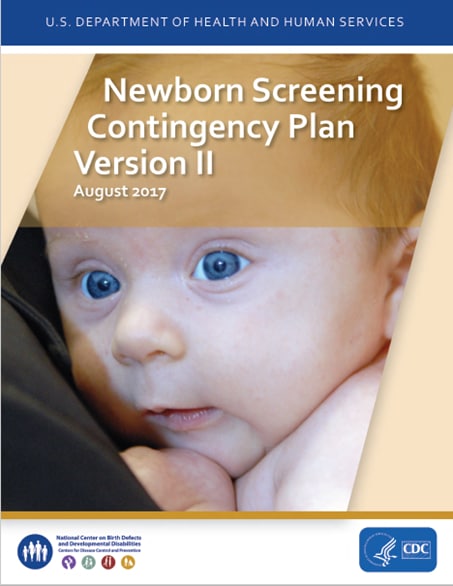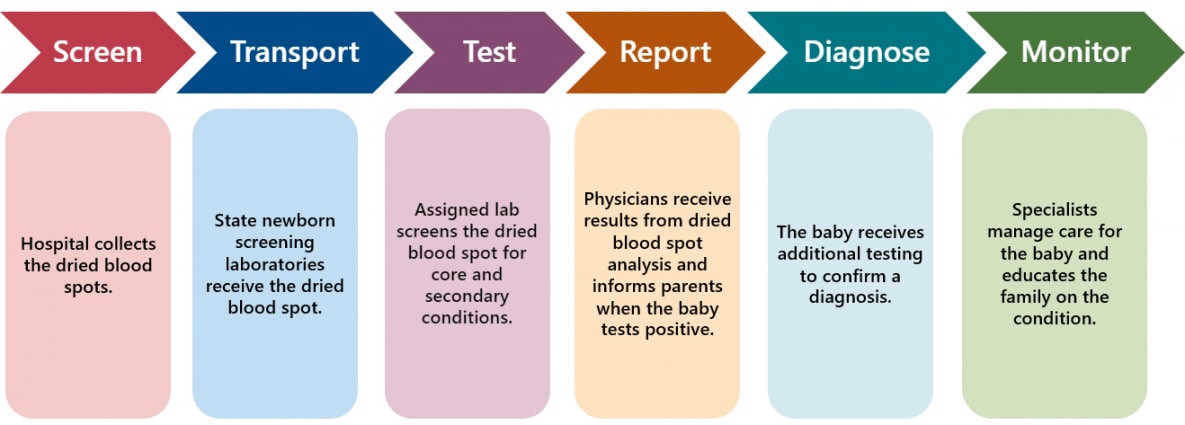A National Contingency Plan for Newborn Screening

A national contingency planpdf icon (CONPLAN) for newborn screening was created in 2010 to serve as a framework for organizations to address potential disruptions in the newborn screening system during an emergency. CDC developed the CONPLAN in partnership with the Health Resources and Services Administration (HRSA), State Departments of Health and newborn screening experts within various organizations. Version II of the CONPLAN was revised in 2017, which added a requirement for it to be reviewed and updated every five years.
The CONPLAN is a highly detailed document that captures the vast newborn screening network in eight key strategic objectives, as seen in the flowchart below. Due to the time-sensitive nature of screening process, it is important to identify the challenges that may arise at each step and to know how to handle them. Ongoing objectives include 1) having a communication plan for key newborn screening stakeholders and 2) educating families about newborn screening.
Newborn Screening Strategic Objective Flowchart4
For dried blood spot screening, The third objective is to collect the specimen from the newborn, having sufficient blood spot cards and appropriately trained hospital staff to collect and ship dried blood spot specimens to the public health screening laboratory. The fourth objective is to transport dried blood spot specimens by assuring timely courier pick-up, and methods to identify if samples have been lost on route to the screening laboratory. The fifth objective is to test and to determine if back-up laboratory capacity will be required. The sixth objective is to report screening results to the state follow-up program, hospital, or physician of record and to determine back-up communication systems. The seventh objective is to communicate results with the family, bring the family and newborn in for recommended diagnostic testing and report final diagnostic information back to the primary care provider and newborn screening program. The eighth objective is to monitor the long-term care of babies with a newborn screening disorder.
The Association of Public Health Laboratoriesexternal icon (APHL) offers a variety of resources and references to help state laboratories respond to public health crises and maintain quality practices through their national newborn screening resource center, NewSTEPsexternal icon.

4Adapted from Department of Health and Human Services, Newborn Screening Contingency Plan Version 2, 2017. (weblink) Accessed July 10, 2020.